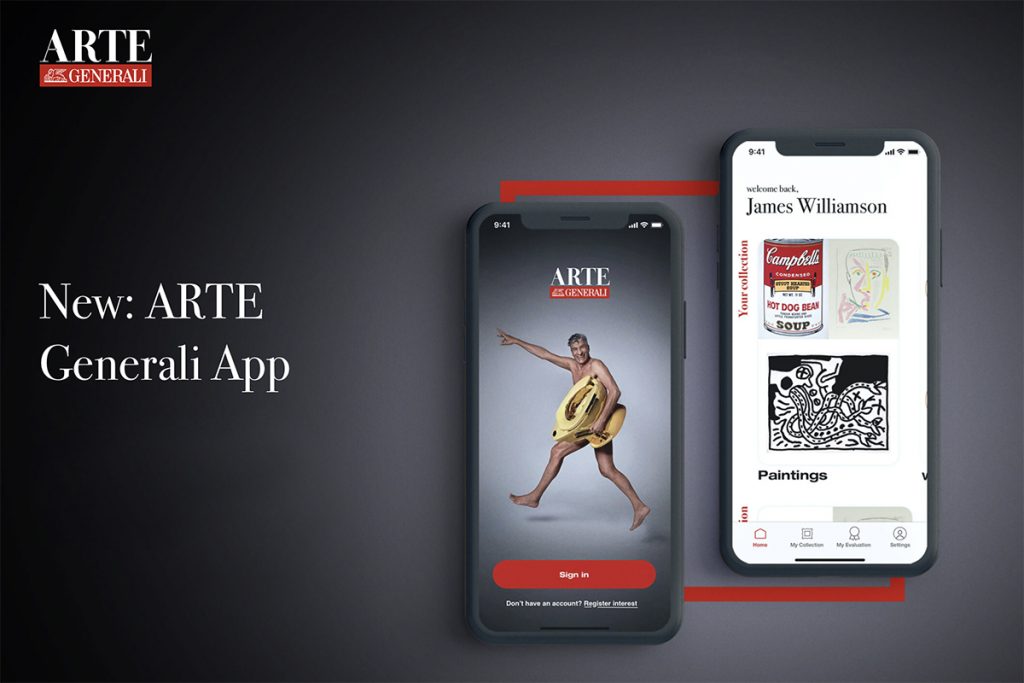Jean Gazançon, CEO of ARTE Generali, on the Vanguard of Art Insurance and Technology (Yes, It Involves an App)


Artnet Gallery Network

Art insurance doesn’t have a particularly glamorous reputation, but the seemingly fusty process of choosing the right coverage is one of the most consequential decisions a collector can make. Hoping to clear away the mental cobwebs and arcane paperwork of the art-insurance process is ARTE Generali, the new unit of Italian insurance titan the Generali Group. ARTE Generali is applying cutting-edge technological knowhow to the process of ensuring a collection (there’s even an easy-to-use app).
We recently spoke with Jean Gazançon, the company’s CEO, about how ARTE Generali is shaking up the art-insurance game and what he sees as technology’s role in forming a better art world.
For someone unfamiliar with ARTE Generali, how would you describe it? What sets the company apart from other art insurers?
ARTE Generali offers innovative and personalized solutions that go beyond insurance coverage for art pieces, jewelry, and other valuable belongings and includes “concierge” assistance in the form of, for example, restoration, transport, and storage, as well as digital tools that make use of the latest technology. ARTE Generali is the only offer in the market that integrates high-capacity insurance coverage with concierge service and digitization, prioritizing data security. In particular, ARTE Generali’s digital platform offers benefits including remote expertise, art-object digitalization, and art-market trend analysis through an exclusive mobile app.

The 2019 ad for ARTE Generali’s app, shot by Oliviero Toscani and featuring Maurizio Cattelan.
ARTE Generali emphasizes the importance of bridging the past and the future. Can you tell me about how you are doing this?
As part of Generali, ARTE Generali builds upon not only the group’s unparalleled insurance expertise but also its unique art and cultural heritage developed since its foundation in 1831. Today, such heritage is displayed in initiatives such as “Valore Cultura” in Italy, the “Radici del Presente” permanent exhibition in the company’s offices in Rome, and Generali Deutschland’s support to some of the most successful art exhibitions in Germany.
Tell me about your clients and what ARTE Generali does for them. What sets it apart?
Our clients are mostly high-net-worth individuals with sophisticated needs. Their artworks and collectibles are unique pieces that require special coverage and knowledge when it comes to underwriting, i.e. assessing the insurance risk. For this kind of work, you need underwriters, like ours, who are experts and know art and its intricacies, such as what is important to observe when it comes to valorizing, handling, transporting, or storing.
What’s more, ARTE Generali commits to helping its clients prevent damage through continuous assistance. This service is not easy to find because it requires specific competencies and it represents a paradigm shift whereby the insurer provides prevention and not only claim settlement—it becomes a partner to clients. Last but not least, clients appreciate the simplicity and effectiveness of ARTE Generali’s processes enabled by a cutting-edge digital platform.
Tell me about the evolution of “Artech,” i.e., the integration of art and technology.
When we talk about Artech, we are referring to start-ups aiming to digitize services connected with the art market. The first generation of Artech focused on online sales. The second generation focuses on so-called “vertical” services, usually powered by blockchain, such as logistics, data analytics, education, scouting of new talents, and insurance.
However, ARTE Generali can be considered a pioneer of the third generation of “Artech,” whose goal is to fuse the physical and digital worlds. On one hand, ARTE Generali simplifies the art insurance processes through new technologies—including blockchain, which makes the digital certificate issued by ARTE Generali’s evaluation experts unalterable. On the other hand, ARTE Generali’s final aim is to create a community of art lovers and to foster the sharing of art as a value for society. Its digital platform is not an end, but a means to an end.
How does insurance play a role in this evolution and, more generally, in fostering the sharing of art as a value for society?
Owning art requires collectors and art lovers to take care of their pieces and to make sure they are secure, safe, preserved, and restored when needed. This preservation of the integrity of an art piece is the duty of any art lover, who is its humble custodian for future generations. By providing prevention, concierge services, protection, and restoration in a personalized manner and with the help of the best experts in the sector, ARTE Generali is aiming to fulfill its purpose of fostering the sharing of art as a value for society.
Can you tell me about ARTE Generali’s Digital Leaders in Art Awards and how it aims to help galleries, museums, and artists in a time of crisis?
In line with the mission mentioned above, ARTE Generali wants to support galleries, private museums, and cultural foundations together with their artists in their efforts to adopt digital projects for the whole community to enjoy art.
This is all the more essential now that many organizations, especially the smaller and younger ones, are struggling to recover from the consequences of the pandemic. Small institutions with up to 10 employees are invited to apply to the Digital Leaders in Art Awards. Each institution also nominates up to three artists with whom they collaborate for the submitted project. The goal is to recognize the most innovative initiatives that use digital tools to strengthen art and creativity in society. Applications are open until October 11, 2020, and our high-caliber jury will then select the nine best projects to be voted on by the general public on ARTE Generali’s website. The three winning projects will be announced next November. ARTE Generali will grant €15,000 to each winner for the technical and functional implementation of its digital projects.
What do you see as the future of technology in relationship to collectors and the greater art world? The future or arts in general?
Like every other sector, art is going through an unprecedented change. Nowadays, it is not only heavy industries that need virtual reality, AI, data science, etc. Artists, galleries, museums, foundations, auction houses, and art fairs need new technologies, too. This trend was clear even before the pandemic, which has obviously accelerated this evolution.
We can see how new art forms are evolving and artists are pushing the boundaries of art. For example, in the past, artists would place their works in galleries; now, they use the web and social media to promote their work. In turn, this brings about a “democratization” effect and helps collectors who are looking for new art investments. Furthermore, more and more artists are creating their art with the help of technology, like graphic software.
All in all, we believe that virtual reality will never fully replace the physical experience of art. Nevertheless, a new, hybrid art world is full of potential and, indeed, very exciting.

Johannes Vermeer, View of Delft (1660-1661). Image: Wikimedia Commons.
Let’s end on a more personal question. If you could own any work of art (no restrictions), what would it be and why?
Preferences evolve through time. This is why I would order my “dream” artworks by age. When I was 10, I would have owned Napoleon crossing the Alps by Jacques-Louis David. At 15, The Embarkation for Cythera by Jean-Antoine Watteau. At 20, View of Delft by Johannes Vermeer. At 25, The Cardsharps by Caravaggio. At 30, Winter by Nicolas Poussin. At 35, Cathedral Square, Milan by Gerhard Richter. At 40, Girl with Mandolin by Pablo Picasso. At 45, the early series by Mark Rothko. At 50, the paper cut-outs by Henri Matisse.